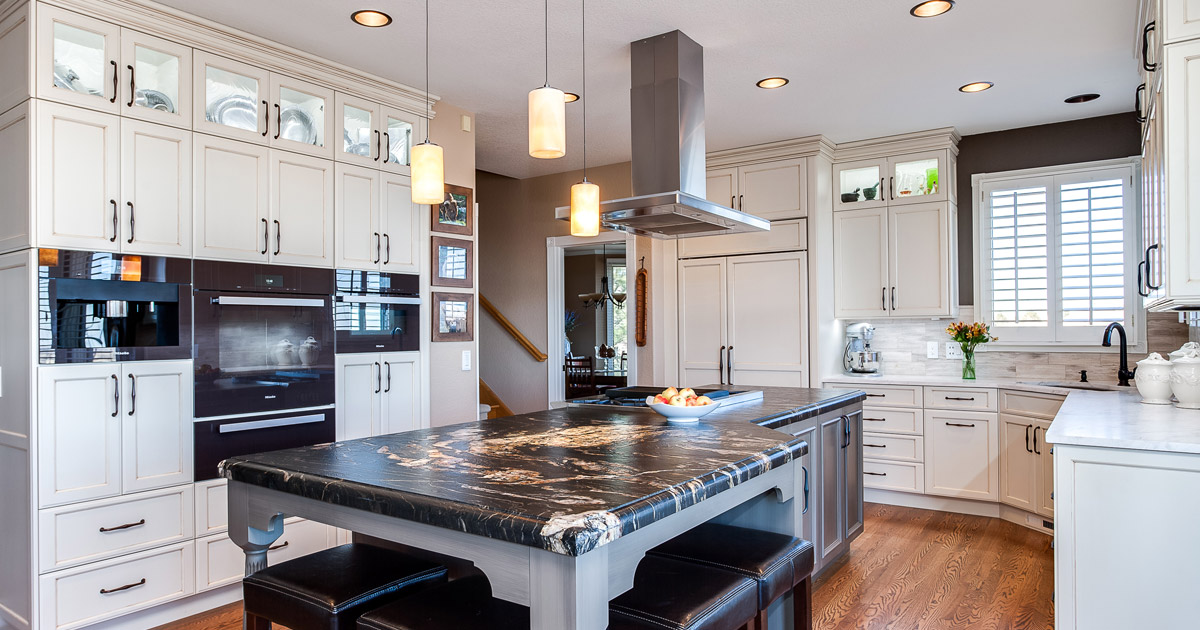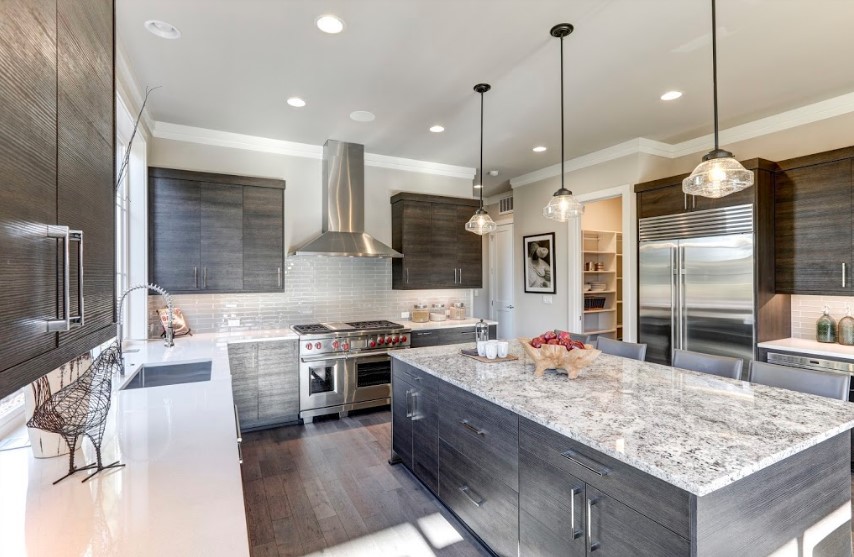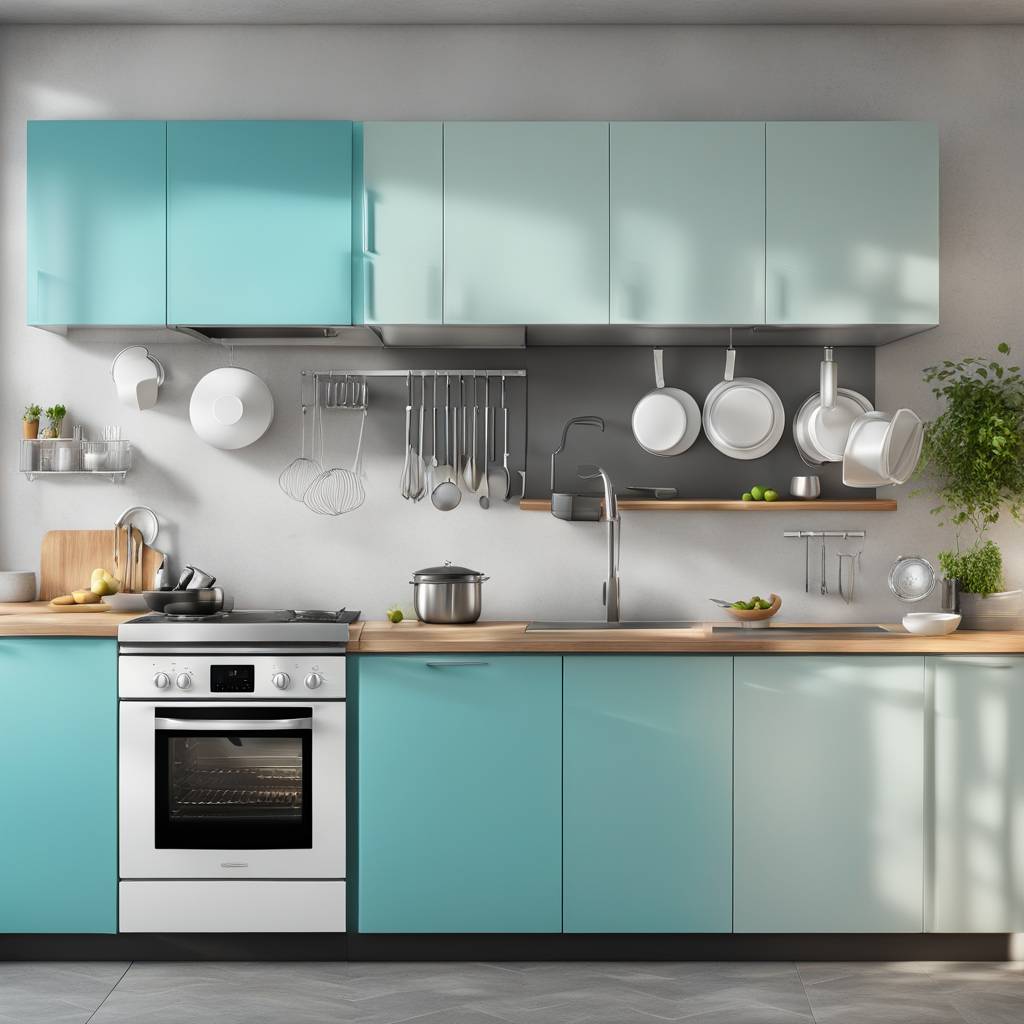It is a privilege to make your kitchen a dramatic focal point by selecting a range of kitchen hood options. It is also an opportunity to enhance the overall design of your kitchen by selecting more subtle styles. The possibilities for range hood designs are limitless. Knowing the fundamentals of range hood design can ensure your range hood is functional.
7 Kitchen Hood options
For those of you who have mistakenly set off your kitchen’s smoke alarm, you already know how important it is to have a range hood fitted.
The question is, how do you choose which range hood is the greatest match for your house and lifestyle? Remember to keep these crucial considerations in mind as you weigh your options.
1. The Exhaust System
Air is routed out of the house via ducts in a ducted exhaust system, also known as a vented system. The operative word in this sentence is “out.” To put it another way: You can’t vent into the attic of your house.
An external wall should always be the preferred location for your kitchen exhaust hood if you have one. Using this method, the ducting is both brief and more efficient. The more difficult and costly it is to install ductwork and a vent hood, the further from an external wall.
The air is filtered, cleaned, and returned to the kitchen rather than routed outside via a duct-free exhaust or non-vented system. You may expect that these systems have a lower efficiency rating than ducted systems, and they need a lot more care, such as cleaning and replacing the filers. So it’s a good idea to know what to anticipate in advance.
2. Your Kitchen Design
Cooking hood placement is dependent on how your kitchen is laid up, both in terms of available space and the best way to use it. Between 24 and 30 inches above the cooktop, it’s best to strive for a hood height of between 24 and 30 inches.
If you’re looking for a kitchen vent hood that can be installed on a wall, integrated into your cabinetry, or hung from the ceiling over an island stove, there are many options. Even chimney hoods may be telescopic to be retracted and tucked away when not in use.
A downdraft kitchen hood option is another brilliant space-saving alternative. When the cooktop isn’t in use, it slides down into a hidden slot in the work surface and stays out of the way.
3. Power of the Fan
The exhaust hood fan’s power will be determined by the room’s size, which will assist keep the air clean and minimize overpowering cooking scents.
To figure out how much space you need, multiply the kitchen ceiling height by the room’s dimensions. This will determine your kitchen’s volume.
Choose a range hood that can replace or clean the air in that area no less often than eight times an hour if possible.
4. Estimate Kitchen Hood Energy
With a little easy arithmetic, you can figure out how much air a kitchen hood can take in an hour, and the fan’s CFM (which stands for “Cubic feet per minute”) is a measurement of fan power that indicates how much air the fan can remove every hour.
The CFM of a given hood may be used to calculate how much air it can replace in an hour by multiplying it by 60. (the minutes in one hour). For example, an exhaust hood fan with a 1,000 CFM can remove all air from a 10ft x 10ft x 10ft space in one minute if the fan is running continuously.
5. Take Range Hood Noise
If your oven hood sounds like a bit of plane taking off every time you turn it on, it may not be worth the money. Experts recommend picking a model that draws air toward the edges or perimeter of the hood. This not only improves the hood’s efficiency but also reduces noise. You should test the hood at the showroom or shop before buying it.
6. Hood Designs
Naturally, you’ll want a vent hood that matches your kitchen’s style and expresses your sense of style. A brushed or a glossy surface, the kind of metal (such as stainless steel or brass), and so on are all examples of personal preference. As a result, you’ll want to consider the different finishes available and the upkeep required to keep them clean.
You should also consider the overall appearance, such as whether or not it is contemporary or classic or whether it blends well with the overall architectural style of your house.
Finally, think about how you want it to fit in with the rest of your kitchen. To create a statement, you may want to select something that sticks out from the rest of your decor and choose a striking hue or conspicuous location.
7. Examine Costs
The cost of a home improvement project may vary considerably, just like any other home improvement project. In addition to size, power consumption, materials, and unique features like heat sensors or automatic shutoff, the cost of the hood will be affected by these factors.
Before you go to the shop, do some research and check prices online to get an idea of what you may anticipate paying. When calculating the cost of a project, don’t forget to include installation. Think about how much money you’ll need to spend on other parts of your kitchen remodel, such as connections and fittings.
Bottom Line
Don’t overlook the range hood as an essential component if you’re planning kitchen hood options. Having a system in place that eliminates smoke, scents, and cooking residue from the air in your kitchen will allow you to keep your house at a comfortable temperature.
There are no restrictions on the variety of brands, styles, and installation methods available. This simple addition can transform the look and feel of your kitchen and make a significant difference in the success of your home design and the functioning of your cooking area.






